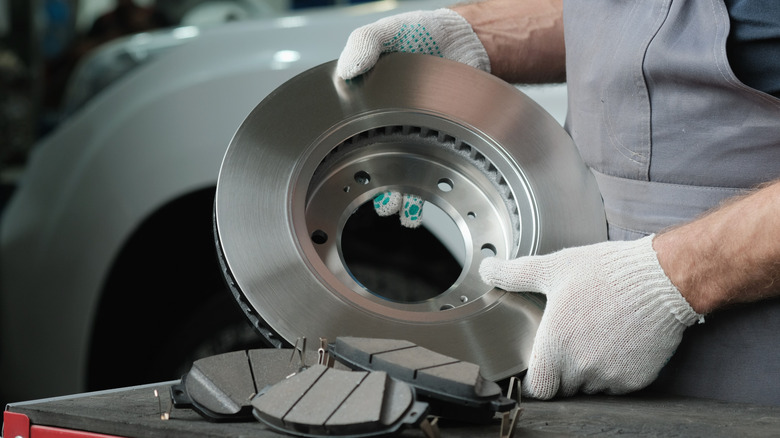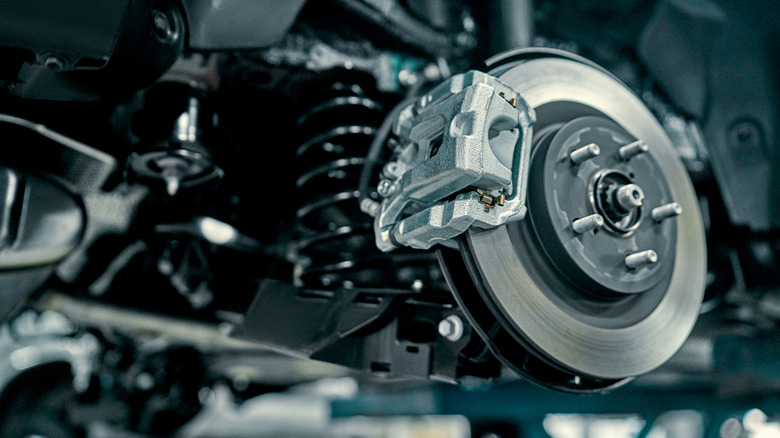How To Tell If A Brake Rotor Is Warped
We shouldn't underestimate the importance of brakes in cars, as they're one of the most crucial safety features. Forget your forward collision warning and rear cross traffic alerts, everything goes back to the brakes. Brakes should always be kept in good condition, as they can make a huge difference, and general brake components are one of the many items on a car that are part of regular maintenance.
The braking system is comprised of several different parts, and the one that takes up the most room is the brake rotor, also known as the brake disc. This is the large metal disc that you might be able to see behind the wheels, depending on whether you have alloys or not, and it's also what holds the caliper. Inside the caliper are the brake pads. If the brake rotor is warped — meaning when the outer area of the rotor on which the caliper resides is no longer completely flat — it's a sign of trouble, and it's definitely time to get your braking system inspected.
Causes and signs of a warped brake rotor
A warped brake rotor means that the flat surface on the outer area of the brake rotor, which is where the brake pads pass under braking, is no longer flat. This can happen for a variety of reasons. One of the most common reasons this happens is because of high temperatures. Most brakes in cars are made of steel, while supercars use carbon ceramic brakes, since those respond better to prolonged hard braking.
Eventually, prolonged high-temperature operation can warp the brake disc, and the brake pad material rubbing against the brake disc surface also contributes to that. Only replacing brake pads, while leaving the old rotors for a long time, is another contributing factor. The rotors' age, combined with frequent use, can also lead to warping. While you might have some experts arguing otherwise, lower-quality components, like cheap brake pads, can also damage and warp brake discs.
The most common way to detect a warped rotor is vibration in the brake pedal under braking, especially under hard braking, and it could also be followed by vibration in the steering wheel. If this happens, inspect the braking system, and budget out replacement rotors and pads to freshen up your braking system and make your car safer and better at stopping. And if you do notice any of the signs of a warping rotor, don't prolong it — always be on top of your maintenance to ensure a safe, reliable experience behind the wheel.

